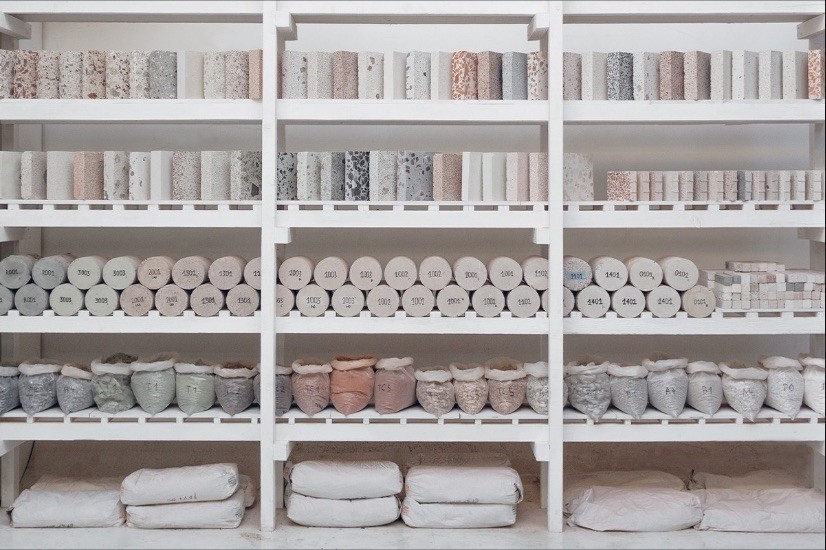Plaster Concrete
Yesterday very widely used in Parisian constructions, the use of plaster, which totally whitened the capital in the 17th century, decreased considerably with the advent of concrete and modern building materials. At a time when we are re-examining our manufacturing methods to find more virtuous and less carbon-intensive solutions, the architects of the hemlock agency are studying the potential of this endemic material.
Their research, carried out with the support of the FAIRE project accelerator, proposes in particular to explore the possible use of plaster in the manufacture of screed instead of cement, responsible for nearly 30.3% of the CO2 emissions of the building sector. Their study also intends to demonstrate the qualities of plaster as a binder capable of replacing natural aggregates, sand and gravel whose reserves are running out, with building rubble: bricks, tiles or crushed concrete, etc.
The Plaster Concrete exhibition and the publication that accompanies it retrace two years of research to explore the possible assemblies for making post-cement screeds. Through samples, test results, prototypes and films, this event reports on laboratory studies as well as experiments carried out in real conditions. This event is also part of a longer research process that will lead to the construction of a mixed-use workshop-housing building in Montreuil and then to the in situ analysis of the durability of this new material.
With the support of the Vieujot gypsum-to-plaster processing plant, located in Soisy-sous-Montmorency in the Val d'Oise, researchers from the Aggregates and Materials Development Processes LaboratoryWithin the Materials and Structure Department of Gustave Eiffel University and the Le Sommer design office, the results of this research confirm the initial hypotheses. Plaster concretes based on reusing mixed bricks and tiles have very good resistance to compression, punching and abrasion. Those based on the reuse of concrete could be mobilized for their mass capacity and acoustic insulation. And, whatever their formulation, they have an excellent record with regard to the use of natural resources while emitting significantly less greenhouse gases than a conventional concrete screed.
Anxious to explore other manufacturing methods at the crossroads of trades and building know-how, for the architects of hemlock, it is not a question of promoting "all-plaster", but rather of nourishing a more in the face of the excesses and constraints that characterize our times so well. The plaster concrete project testifies "to our capacity, as architects, to take a new look at the available resources, to redefine our relationship to materials and to continue to question the systemic reflexes at work in practice. contemporary in construction.
